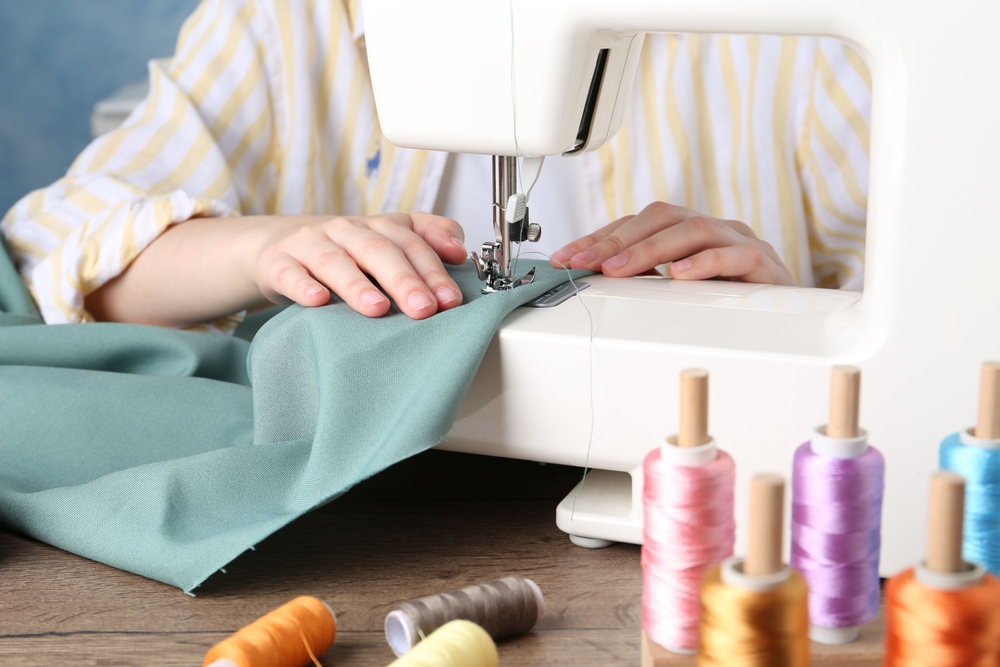Shopping for clothes can easily become a financial trap, especially when trends change faster than the seasons. The desire to keep up with the latest styles can put a dent in your budget, but looking amazing doesn’t have to cost a fortune. With a few smart strategies, you can refresh your wardrobe without splurging. Here are 13 clever ways to spend less on clothes while still looking fabulous.
1. Only Buy Timeless Pieces

Investing in timeless pieces is one of the most effective ways to maintain a stylish wardrobe without breaking the bank. Classic items like a well-tailored blazer, a little black dress, or a quality pair of jeans never go out of style. They serve as versatile staples that can be dressed up or down, making them worth the initial investment. According to fashion experts at The New York Times, focusing on timeless pieces can reduce the need for frequent shopping sprees.
When you build your wardrobe around classic items, you create a foundation that can be easily updated with seasonal accessories. A statement necklace or a trendy scarf can instantly modernize a classic look. This approach requires less frequent shopping, thus saving you money in the long run. Plus, when you spend wisely on quality pieces, they last longer, enhancing both your style and your savings.
2. Learn How To Layer

Layering is a brilliant way to make your wardrobe more versatile without buying new clothes. By learning how to layer effectively, you can create multiple outfits from just a few items. A simple white shirt can be transformed with a vest, a sweater, or a jacket, offering numerous looks from one piece. This not only expands your wardrobe options but also allows you to adapt to changing weather conditions.
Experimenting with different textures, colors, and patterns in your layers can add depth and interest to your outfits. It’s a way to express your personal style and stay trendy without additional purchases. By playing with proportions—like combining a long cardigan with a short skirt—you can keep your look fresh and dynamic. Layering is a skill that pays off in both fashion flexibility and financial savings.
3. Shop Off-Season

Purchasing clothes out of season is a strategic move that can significantly reduce your clothing expenses. Retailers often offer substantial discounts on out-of-season items to make room for new inventory. For example, buying a winter coat in March or a swimsuit in September can save 50% or more. According to a Consumer Reports study, off-season shopping is one of the top ways to cut clothing costs.
This approach requires a bit of planning and foresight, but the savings are worth the effort. By predicting your future clothing needs and shopping accordingly, you can snag great deals on high-quality items. Keep an eye out for clearance sales and end-of-season markdowns to maximize your savings. With patience and timing, you can build a wardrobe full of stylish, affordable finds.
4. Swap and Borrow

Clothing swaps and borrowing from friends are eco-friendly ways to refresh your wardrobe without spending a dime. Organize a swap party with friends where everyone brings items they no longer wear but are still in good condition. This allows you to exchange items and breathe new life into your closet. It’s a fun social activity that not only saves money but also reduces fashion waste.
Borrowing clothes for special occasions is another smart tactic. Instead of purchasing an expensive dress for a single event, consider borrowing from a friend or renting through a service. This approach ensures that you have the perfect outfit for any occasion without the price tag. Sharing wardrobes can be both economical and environmentally friendly, offering a guilt-free way to stay fashionable.
5. Reimagine Your Wardrobe

Sometimes the key to a fresh look is rethinking how you wear what you already own. Get creative with your current wardrobe by experimenting with new combinations and styles. A long skirt can become a strapless dress, or a button-down shirt can be worn as a light jacket. According to stylist advice in Harper’s Bazaar, reimagining your wardrobe involves seeing potential in every piece.
This practice encourages you to think outside the box and discover new uses for old items. By playing around with different pairings, you can breathe new life into your closet without buying anything new. It’s a sustainable approach that challenges you to be resourceful and imaginative. Transform your wardrobe with creativity, and you’ll find endless possibilities without needing to make additional purchases.
6. Follow the 30-Wear Rule

The 30-wear rule is a simple guideline to help you make smarter shopping decisions. Before purchasing any new item, ask yourself if you’ll wear it at least 30 times. This rule encourages you to focus on buying versatile, durable items. It’s a way to ensure that each piece is a worthwhile investment, reducing impulse buys and waste.
Focusing on the longevity of your clothing helps you develop a more mindful approach to shopping. When you aim for 30 wears, you’re likely to choose higher-quality garments that stand the test of time. This practice not only saves money but also promotes a more sustainable wardrobe. By being selective with your purchases, you can curate a closet that’s both stylish and economical.
7. Embrace Thrift and Vintage Shopping

Thrifting and shopping for vintage clothing have become increasingly popular ways to find unique and affordable pieces. These markets offer a treasure trove of styles from various eras, enabling you to express your individuality. Thrift stores and vintage shops often have high-quality items at a fraction of the original price. According to a report by Fashionista, the second-hand market is booming due to its affordability and sustainability appeal.
Shopping second-hand is not only cost-effective but also environmentally friendly, as it reduces demand for new clothing production. Each thrifted find has its own story, adding character and uniqueness to your wardrobe. Hunting for these gems can be an exciting adventure, yielding rare pieces that make your style stand out. Embrace the thrill of the hunt and add vintage flair to your fashion arsenal without overspending.
8. Set a Clothing Budget

Establishing a clothing budget is a proactive step towards controlling your spending habits. Determine a realistic amount you’re willing to spend on clothes each month or season. This helps you prioritize your purchases and avoid impulsive buys. By sticking to your budget, you’re more likely to make thoughtful, intentional shopping decisions.
Creating a budget also allows you to save for larger purchases, such as investment pieces. It encourages you to assess what you truly need versus what you want. A well-planned budget helps you resist the temptation of fleeting trends and focus on quality over quantity. With a clear financial plan, you can maintain your style without compromising your savings.
9. DIY and Upcycle

Getting crafty with DIY and upcycling projects can revamp your old clothes into new, trendy pieces. Simple alterations, such as hemming a skirt or adding embellishments, can drastically change a garment’s look. Numerous online tutorials guide you through easy fashion transformations. This approach not only saves money but also allows you to personalize your wardrobe to reflect your unique style.
Upcycling extends the life of your clothing, reducing waste and promoting sustainability. It’s an opportunity to give new purpose to items you might otherwise discard. Plus, creating custom pieces offers a sense of accomplishment and creativity. Embrace your inner designer and transform your wardrobe one DIY project at a time.
10. Sign Up For Sales
![]()
Being sale savvy means keeping an eye out for discounts and special promotions. Sign up for newsletters from your favorite brands to get notified about sales events and exclusive offers. Timing your purchases around major sale days, like Black Friday or end-of-season clearances, can lead to significant savings. With a strategic approach, you can snag stylish pieces at a fraction of the original cost.
While shopping sales, it’s essential to stay focused on what you need rather than getting swept up in the excitement of discounts. Make a list of essential items before hitting the stores to avoid unnecessary purchases. This disciplined approach ensures that you only buy what adds value to your wardrobe. Mastering the art of sale shopping allows you to stay fashion-forward without overspending.
11. Dress Up Looks With Accessories

Accessories have the power to transform an outfit without the need for new clothes. A bold necklace, a chic hat, or a stylish belt can add a fresh twist to your existing wardrobe. Investing in a few key accessories allows you to experiment with different looks and personal styles. These smaller purchases can make a significant impact on your overall appearance.
By focusing on accessories, you can stay on trend without the expense of a new wardrobe. They offer a versatile way to refresh your outfits for different occasions. A well-chosen accessory can elevate even the most basic ensemble, adding flair and personality. With a curated collection of accessories, you can reinvent your style as often as you like while keeping costs down.
12. Understand Your Signature Style

Understanding and refining your personal style can save you from unnecessary purchases and fashion faux pas. Take time to analyze what styles and colors you gravitate towards and feel most comfortable in. This self-awareness helps you make informed decisions about what to buy and what to skip. Knowing your style ensures that each purchase is intentional and aligned with your wardrobe.
When you have a clear sense of your style, you’re less likely to be swayed by fleeting trends. This focused approach reduces clutter and keeps your wardrobe cohesive and wearable. It also boosts your confidence, as you’ll consistently dress in a way that represents who you are. Cultivating a strong personal style is a savvy fashion strategy that benefits both your closet and your wallet.
13. Shop Less Often and Mindfully

Mindful shopping is about making conscious decisions rather than impulsive buys. Before purchasing, ask yourself if the item fits well, complements your wardrobe, and serves a genuine need. Adopting this mindful approach can prevent buyer’s remorse and reduce clutter in your closet. It encourages you to be intentional with your spending, leading to a more curated and satisfying wardrobe.
By practicing mindfulness in shopping, you develop a deeper appreciation for each piece you own. This helps you build a collection of clothes that you love and wear regularly. Mindful shopping aligns with a minimalist approach, focusing on quality over quantity. Embrace this practice to achieve a balanced wardrobe that’s stylish, functional, and budget-friendly.
This article is for informational purposes only and should not be construed as financial advice. Consult a financial professional before making investment or other financial decisions. The author and publisher make no warranties of any kind.








